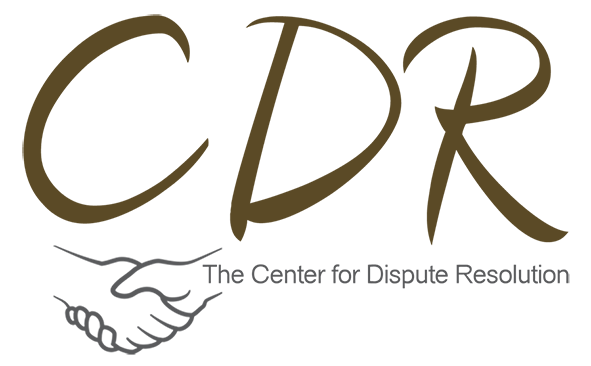
Conflict Management in Hospitals
In the fast-paced and high-pressure environment of hospitals, conflicts are bound to arise. These conflicts can stem from various sources, including differences in opinions, miscommunication, power struggles, and resource allocation. Understanding and managing these conflicts effectively is crucial for maintaining a harmonious work environment and ensuring optimal patient care. In this article, we will explore a case study of common conflicts that occur in hospitals, and discuss strategies to address and resolve them.
Conflicts in hospitals can have far-reaching consequences, affecting not only the well-being and satisfaction of the staff but also patient outcomes. It is essential for healthcare organizations to recognize the significance of conflict management and provide resources to address and resolve conflicts promptly. By proactively dealing with conflicts, hospitals can foster a collaborative and supportive environment that enhances patient care and employee satisfaction.
Case Study 1: Interdisciplinary Disagreements on Treatment Approach
In a bustling hospital, conflicts may arise when healthcare professionals from different disciplines, such as doctors, nurses, and therapists, have varying opinions on the best course of treatment for a patient. These conflicts can lead to delays in patient care, confusion among the staff, and ultimately compromise patient outcomes. To address this issue, hospitals can implement regular interdisciplinary meetings where professionals can openly discuss and share their perspectives, leading to a collaborative decision-making process.
Case Study 2: Conflict between Medical Staff and Administration
Conflicts between medical staff and hospital administration can emerge due to differences in priorities, resource allocation, and working conditions. For instance, medical staff may feel overworked and undervalued, while administrators face budget constraints and management challenges. Open and transparent communication channels, such as regular meetings and feedback sessions, can help bridge the gap between medical staff and administration, fostering mutual understanding and cooperation.
Case Study 3: Communication Breakdown during Shift Handover
During shift handovers, crucial patient information needs to be accurately conveyed to ensure continuity of care. However, communication breakdowns can occur, leading to misunderstandings, errors, and potential harm to patients. Implementing standardized protocols for shift handovers, including clear documentation and verbal communication guidelines, can minimize conflicts and enhance the effectiveness of information transfer between healthcare professionals.
Case Study 4: Resource Allocation Disputes
Hospitals often face challenges when allocating limited resources, such as beds, medical equipment, and personnel. These disputes can arise when different departments or units vie for the same resources. Transparent and fair resource allocation policies, guided by evidence-based criteria, can help minimize conflicts by ensuring equitable distribution and addressing the needs of the patients and healthcare providers.
Case Study 5: Conflict between Healthcare Professionals and Patients’ Families
Conflicts between healthcare professionals and patients’ families can occur when there are disagreements about treatment options, care decisions, or lack of information sharing. It is crucial to maintain open lines of communication with patients’ families, providing them with clear explanations, empathy, and involving them in the decision-making process whenever possible. Implementing patient-centered care approaches, such as family conferences or involving a patient advocate, can help address conflicts and ensure that patients’ families feel heard and respected.
Strategies for Conflict Resolution in Hospitals
Resolving conflicts in hospitals requires a systematic approach that promotes effective communication, collaboration, and mutual respect. Here are some strategies that can be employed:
- Active Listening: Encourage all parties involved to actively listen to one another, allowing each person to express their concerns and perspectives without interruption. This helps in fostering understanding and empathy.
- Mediation: In complex conflicts, involving a neutral third party, such as a trained mediator, can facilitate constructive dialogue and help the parties find common ground.
- Establishing Clear Communication Channels: Create structured communication channels, such as regular team meetings, feedback sessions, and open-door policies, to encourage dialogue and address conflicts in a timely manner.
- Conflict Resolution Training: Provide conflict resolution training to healthcare professionals, equipping them with essential skills to manage and resolve conflicts effectively.
- Emphasizing Collaborative Decision-Making: Encourage interdisciplinary collaboration and shared decision-making processes to prevent conflicts and ensure that all perspectives are considered.
- Encouraging a Culture of Respect: Foster a culture that values respect, open communication, and teamwork. This helps in preventing conflicts and resolving them in a constructive manner when they do arise.
By implementing these strategies, hospitals can create an environment where conflicts are acknowledged and addressed promptly, leading to improved patient outcomes and a more harmonious work atmosphere.
Conclusion
Conflicts are an inevitable part of the hospital environment, but they can be managed effectively through proactive measures and open communication. By recognizing the importance of conflict resolution, hospitals can create a culture of collaboration, understanding, and mutual respect. This, in turn, leads to better patient care, improved staff satisfaction, and ultimately, healthier outcomes for all.
In conclusion, effectively managing conflicts in hospitals is vital for promoting a healthy and productive work environment, ensuring optimal patient care, and fostering positive relationships between healthcare professionals and patients’ families. By implementing strategies for conflict resolution and maintaining open lines of communication, hospitals can navigate conflicts successfully, leading to improved outcomes for all stakeholders involved.
✅ Resolve disputes effortlessly. ✅ Build stronger relationships. ✅ Subscribe FREE now!
Don't miss out! Join us today. 🚀


Comments are closed